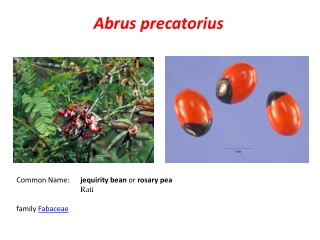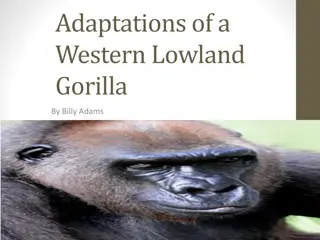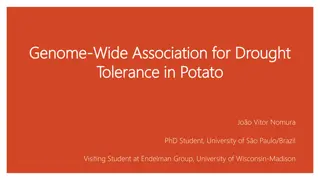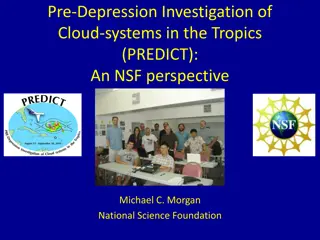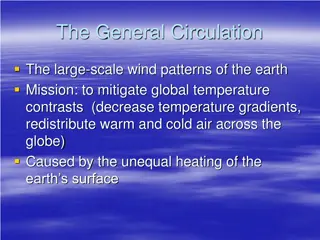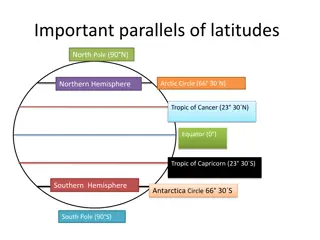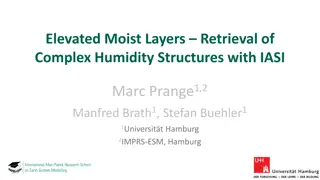Abrus precatorius
Abrus Precatorius, also known as the jequirity bean or rosary pea, is a highly toxic plant that is found throughout the tropics. Its seeds are used in jewelry and necklaces, but they can be fatal if ingested. This article explores the distribution, toxic principle, animals affected, mechanism of tox
18 views • 23 slides
Understanding Climate Change: Insights from Reed B. Haslam, NYSC Delegate 1972
Reed B. Haslam, an experienced atmospheric scientist, reflects on his early weather observations, noticing the impact of climate change through warming temperatures and reduced precipitation. He emphasizes the key contributors to global warming, such as deforestation and carbon dioxide emissions. Co
1 views • 54 slides
Understanding Tropical Cyclones: General Characteristics, Types, and Origins
Tropical cyclones, developed in the region between the tropics of Capricorn and Cancer, exhibit unique characteristics such as varying size and velocity. They primarily impact coastal areas, known for low pressure centers and lack of temperature variations. These cyclones are classified based on int
0 views • 15 slides
Adaptations and Habitat of Western Lowland Gorillas
Discover the unique adaptations of Western Lowland Gorillas including their vegetarian diet, lifespan in the wild and captivity, human-like communication abilities, and their habitat in the African Tropics Secondary Forests. Learn about the importance of conservation efforts to protect these magnifi
0 views • 8 slides
Transforming Higher Education at JCU: Innovations and Challenges
JCU, a leading institution in the tropics, provides a unique learning experience with its diverse ecosystems. With a focus on learning, teaching, and student engagement, JCU supports staff and students across campuses and study centers. Emphasizing a whole-of-institution approach, JCU strives for in
0 views • 5 slides
Genome-Wide Association for Drought Tolerance in Potato Study
PhD student João Vitor Nomura is conducting a Genome-Wide Association study for drought tolerance in potatoes at the University of São Paulo and the University of Wisconsin-Madison. The research focuses on adapting potato varieties to extreme heat waves and improving food security. Different abiot
0 views • 19 slides
PREDICT: Pre-Depression Investigation of Cloud Systems in the Tropics
PREDICT is an NSF project focusing on investigating tropical cloud systems to better understand tropical cyclone formation. It builds on previous field campaigns and modeling activities, aiming to test hypotheses, explore different genesis pathways, and advance our understanding of the processes inv
0 views • 10 slides
Understanding the General Circulation of Earth's Atmosphere
The general circulation of the Earth's atmosphere plays a crucial role in mitigating global temperature contrasts by redistributing warm and cold air. This system includes the Polar Cell at high latitudes, the Hadley Cell in the tropics, trade winds, oceanic heat distribution through Eckman Transpor
0 views • 13 slides
Exploring the Rich Ecosystem of Equatorial Forests
The Equatorial Forests are a vital region between the Tropics of Cancer and Capricorn, abundant in dense vegetation, diverse wildlife including gorillas and elephants, and a unique climate characterized by hot temperatures and convectional rainfall. This biodiverse area is also rich in economic reso
0 views • 14 slides
Understanding Earth's Parallels and Meridians: A Geographical Overview
Explore the significance of latitudes and longitudes, including important lines such as the Equator, Tropics, Arctic Circle, Prime Meridian, and International Date Line. Discover the latitudinal and longitudinal extent of India and the location of Delhi Public School in Srinagar. Gain insights into
0 views • 7 slides
Understanding Elevated Moist Layers and Relative Humidity in the Tropics
This presentation explores the retrieval of complex humidity structures and relative humidity patterns in the tropics using data from various research studies. It delves into the significance of Elevated Moist Layers (EMLs) and their relationship to deep convection, with a focus on the ERA-Interim d
0 views • 59 slides
Impact of Weakening Jet Stream on British Isles Climate
Jet streams in warming climate show a faster increase in poles than in tropics and temperate zones. This shift affects the average position of the jet stream, likely moving it poleward. Consequently, the British Isles may experience a more Mediterranean-like climate, with deserts expanding northward
0 views • 43 slides
